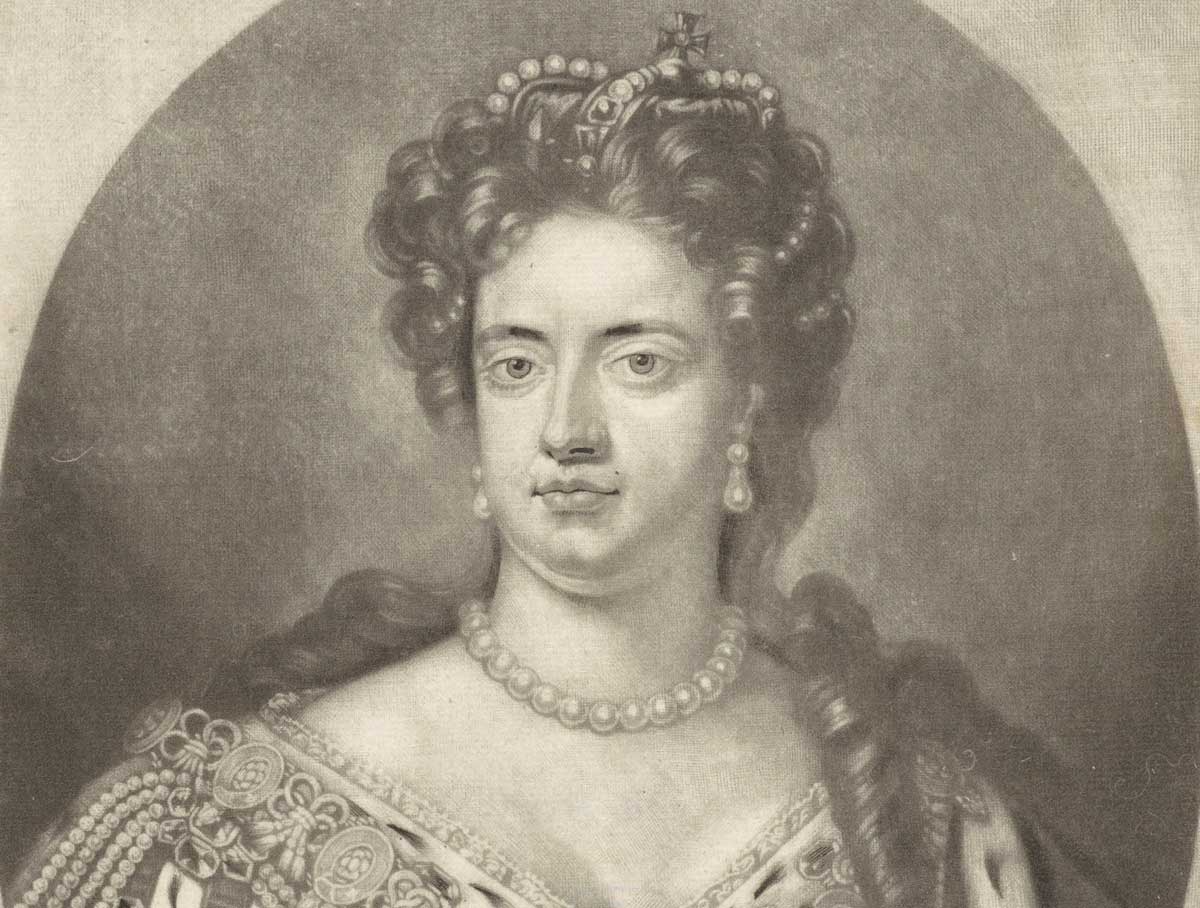Coronation of Queen Anne
Richard Cavendish describes the coronation of Queen Anne on April 23rd, 1702.

The last of the Stuarts on the English throne, Anne was 37 when she succeeded her brother-in-law William III on March 8th, 1702. She was devoted to her husband, Prince George of Denmark, and he to her, but of their five children by her continual pregnancies, none had survived. Shy, plain, red-faced and dumpy, growing increasingly stout and a martyr to rheumatism, she was not considered intelligent and at this point she was under the thumb of her old friend from school days, Sarah Jennings, the brilliant and strong-minded wife of John Churchill, Earl of Marlborough.
